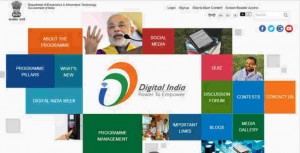Thomas Friedman is a journalist/author who is not really an exceptional journalist or an exceptional author. He has won a few Pulitzer prizes, but he is not popular because of them. His claim to fame is a rather elementary named book, titled, ‘The World is Flat’. Published in 2005, it is  quite a simple book talking about the state of affairs of the world, especially in connection with globalization. The book speaks of how the world is coming together as one big place from Denver to Dalian to Bangalore. It was meant to be a chronicle of our times, and a sort of prognosis of the things that are yet to come. Friedman reaped rich rewards from his book, traveling across the globe, giving talks and discussing the subject.
quite a simple book talking about the state of affairs of the world, especially in connection with globalization. The book speaks of how the world is coming together as one big place from Denver to Dalian to Bangalore. It was meant to be a chronicle of our times, and a sort of prognosis of the things that are yet to come. Friedman reaped rich rewards from his book, traveling across the globe, giving talks and discussing the subject.
When the book came out, there was much fanfare around it. The book seemed to propose a hypothesis, no less significant, than say E=MC² or better still, like the discovery of New World by Msieu. Columbus.
The book spoke about a new globalized inter-connected world where information, people, money and even ideas moved across at breathtaking speed. It was a world where, kids in the US had to be wary of growing up in a world, where kids in India or China could easily replace them. The world was being progressively flattened, and there was little to do to prevent the eventuality.
It has been a decade since Friedman came up with book and much water has flown in the Mississippi River or the Yangtze or even the Ganges since then to erode the beautiful facade of ‘flatness’. I recall listening to all a talk by Friedman, which he gave in Mumbai at NASSCOM summit. In it, he spoke about how times had changed from the past, when American kids would leave food on the plate and their parents would chide them, “spare a thought for the hungry millions in India”. And now, when the kids are disinclined to study, the current parents warn their kids, “be scared of the learning millions in India”. Honestly, my heart swelled with happiness at the prospect of living in a world where nationality did not dictate your destiny. We could be anyone, we wanted, so long as we wanted it hard enough. The future indeed seemed rosy and bright, during such times.
Cut to today, and I chanced upon the latest vitriol by Republican presidential nominee (and possibly — god forbid, would-be American President) Donald Trump, wherein he blamed India, China  and Mexico for the “greatest jobs theft” in the history of the world. According to him, Indians and other nationals were gobbling up American jobs. Indians were no more a threat, but rather scheming thieves that stole and cheated. Now how could that narrative change so quickly? What happened to that ‘flat world’ that was meant to be equal for all Continue reading
and Mexico for the “greatest jobs theft” in the history of the world. According to him, Indians and other nationals were gobbling up American jobs. Indians were no more a threat, but rather scheming thieves that stole and cheated. Now how could that narrative change so quickly? What happened to that ‘flat world’ that was meant to be equal for all Continue reading


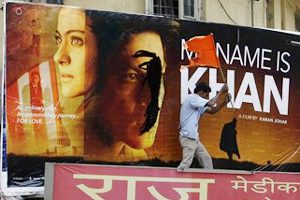 preventive custody, and even warning Uddhav Thackeray of dire repercussions. The battle lines were drawn, a defiant SRK refused to apologise, whereas the Shiv Sena would have nothing less than it. As the battle progressed, the saffron party seemed to lose steam and was looking for a way out of the imbroglio, with its leader talking about a “public apology” as an acceptable truce. That did not come though, and the film was released among heightened tensions. As is the case with quite a few SRK movies, MNIK earned its crores, got all the awards, and was declared a hit.
preventive custody, and even warning Uddhav Thackeray of dire repercussions. The battle lines were drawn, a defiant SRK refused to apologise, whereas the Shiv Sena would have nothing less than it. As the battle progressed, the saffron party seemed to lose steam and was looking for a way out of the imbroglio, with its leader talking about a “public apology” as an acceptable truce. That did not come though, and the film was released among heightened tensions. As is the case with quite a few SRK movies, MNIK earned its crores, got all the awards, and was declared a hit.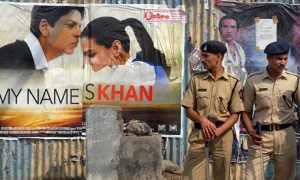 diplomatic mumbo-jumbo, here and there, but these were largely from the smaller actors, the ones people call character artists. The big shots of Bollywood were dumb-founded, much like their likeness that represents them at Madame Tussauds and elsewhere. The Khans, the Kapoors and even the Bachchans, kept mum. Bollywood, the big family of superstars, was more like a petrified herd of goats. The kind that will retreat into the barnyard at the sign of first trouble.
diplomatic mumbo-jumbo, here and there, but these were largely from the smaller actors, the ones people call character artists. The big shots of Bollywood were dumb-founded, much like their likeness that represents them at Madame Tussauds and elsewhere. The Khans, the Kapoors and even the Bachchans, kept mum. Bollywood, the big family of superstars, was more like a petrified herd of goats. The kind that will retreat into the barnyard at the sign of first trouble.
 realised, that “70 year-old” was more like a placebo for hassled nerves.
realised, that “70 year-old” was more like a placebo for hassled nerves. We were there at the base by around 7.30 am, after parking the car, we started on the route. It was a dusty hilly road, and immediately, it started up. At the start you could hear the horses grunting, possibly doing some horsey pranayam in preparation for the taxing climb ahead. For a moment, I was much tempted to load myself on a horse, but our monky guide was firm, and dissuaded me from it. Believe me; very shortly I would be cursing him for it.
We were there at the base by around 7.30 am, after parking the car, we started on the route. It was a dusty hilly road, and immediately, it started up. At the start you could hear the horses grunting, possibly doing some horsey pranayam in preparation for the taxing climb ahead. For a moment, I was much tempted to load myself on a horse, but our monky guide was firm, and dissuaded me from it. Believe me; very shortly I would be cursing him for it. minutes, I would be catching up on my breath. In between, there would be all those horses with those relaxed riders would pass by, and I would grunt in dismay. Why did I ever listen to that monk, is what I grumbled. As the sun gained strength as it made its way across the sky, the going seemed to go tougher.
minutes, I would be catching up on my breath. In between, there would be all those horses with those relaxed riders would pass by, and I would grunt in dismay. Why did I ever listen to that monk, is what I grumbled. As the sun gained strength as it made its way across the sky, the going seemed to go tougher.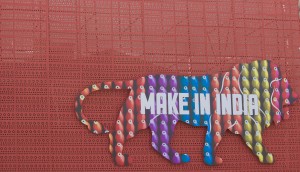 finding an auto becomes an ordeal, something as extraordinary as a Make In India Week (MIIW) seems completely unnecessary. Thus on spotting a green colour media pass for MIIW dangling from my neck, the gentleman in the hard-won share-auto could not help comment. “Auto strike to rokh naheen paya, phir itna bada nautanki kyun?” (The administration could not stall the auto strike, so what is the real need for such an event).
finding an auto becomes an ordeal, something as extraordinary as a Make In India Week (MIIW) seems completely unnecessary. Thus on spotting a green colour media pass for MIIW dangling from my neck, the gentleman in the hard-won share-auto could not help comment. “Auto strike to rokh naheen paya, phir itna bada nautanki kyun?” (The administration could not stall the auto strike, so what is the real need for such an event).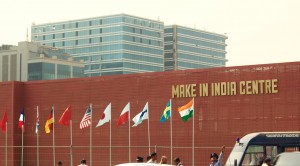 down. Somehow, that anecdote seemed apt to me. It seems that we Indians seem to have a problem with success, especially when it is of our very own. We find it hard to digest, to come to terms with it. So we lash out at it, debunk it, call it useless, futile, nautanki, etc.. That is a typical way in which many react in India. But this trend has exacerbated with the coming the PM Narendra Modi. Everything now is perceived from a political prism, thus, if you don’t agree with him, everything he does has to be negative. So what if it is Skill India or Make In India?
down. Somehow, that anecdote seemed apt to me. It seems that we Indians seem to have a problem with success, especially when it is of our very own. We find it hard to digest, to come to terms with it. So we lash out at it, debunk it, call it useless, futile, nautanki, etc.. That is a typical way in which many react in India. But this trend has exacerbated with the coming the PM Narendra Modi. Everything now is perceived from a political prism, thus, if you don’t agree with him, everything he does has to be negative. So what if it is Skill India or Make In India?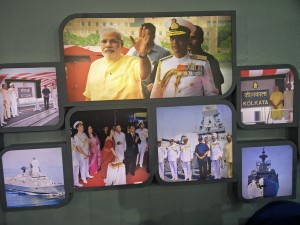 lithe manner. The term jamboree (essentially means a large congregation or party; extravagant and lavish. Usually, a boisterous affair.) is symbolic of that mindset, a perspective that has been tinged with ignorance
lithe manner. The term jamboree (essentially means a large congregation or party; extravagant and lavish. Usually, a boisterous affair.) is symbolic of that mindset, a perspective that has been tinged with ignorance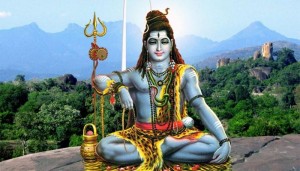 Astha TV, all would have been rather fine. But instead, these points were thrown up at the prestigious annual science congress event that took place in Mysore this year. The event is an annual jamboree that travels from one Indian city to another, apparently to promote scientific temperament within the country. Yet, the only thing that this event seems to doing is promote psuedo-relegiousness of the worst kind. Science, the empirical discipline, has taken a back seat to mythology and religion, which has no relation whatsoever with empiricism.
Astha TV, all would have been rather fine. But instead, these points were thrown up at the prestigious annual science congress event that took place in Mysore this year. The event is an annual jamboree that travels from one Indian city to another, apparently to promote scientific temperament within the country. Yet, the only thing that this event seems to doing is promote psuedo-relegiousness of the worst kind. Science, the empirical discipline, has taken a back seat to mythology and religion, which has no relation whatsoever with empiricism.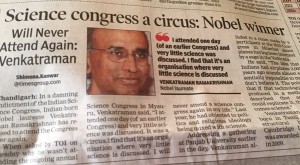 then, Indian-born Nobel laureate Venkatraman Ramakrishnan dubbed the event as “
then, Indian-born Nobel laureate Venkatraman Ramakrishnan dubbed the event as “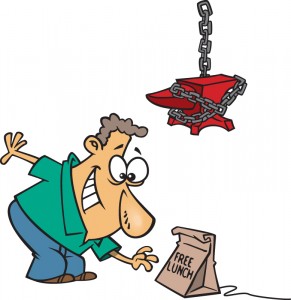
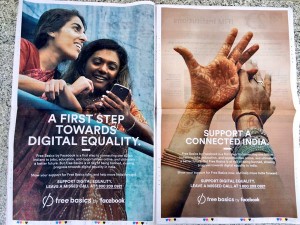 The reason that Mark Zuckerberg is going ballistic this time in India, is because of the manner in why Facebook had been splattered with a cake on its face, the last time round. In fact, it had been just some 6 odd months back when Free Basics in its earlier avatar as Internet.org faced immense resistance by the public at large, and thus was stalled by the Telecom Regulators. At that time, Facebook was taken aback by the power of the collective, by the sheer virality of things. So this time, it kind of came prepared, it repackaged the offering (giving it a kinder overtone), gave the offering an emotional spiel, had the creatives in place, and even Zuckerberg, who is on a paternity leave, is now writing blogs defending the offering.
The reason that Mark Zuckerberg is going ballistic this time in India, is because of the manner in why Facebook had been splattered with a cake on its face, the last time round. In fact, it had been just some 6 odd months back when Free Basics in its earlier avatar as Internet.org faced immense resistance by the public at large, and thus was stalled by the Telecom Regulators. At that time, Facebook was taken aback by the power of the collective, by the sheer virality of things. So this time, it kind of came prepared, it repackaged the offering (giving it a kinder overtone), gave the offering an emotional spiel, had the creatives in place, and even Zuckerberg, who is on a paternity leave, is now writing blogs defending the offering. 

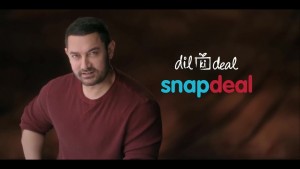 intangible, a brand that people like, associate or even hate. And in the past couple of days (specifically 2), the edifice of the brand, built with time and money, has developed a crack and all because of an event which was totally not in their hands.
intangible, a brand that people like, associate or even hate. And in the past couple of days (specifically 2), the edifice of the brand, built with time and money, has developed a crack and all because of an event which was totally not in their hands. hyper active twitteratis were devising ways coordinating attacks on the online retailer, who just dug the head in the sand waiting for all to blow away. Sadly like those hurricanes in the gulf of Mexico, this one only got stronger. As of penning this piece the app had received some 92000 negative ratings. Then there was the supposed uninstall of some 6 lakh by users, and claimed loses of some 100 crores.
hyper active twitteratis were devising ways coordinating attacks on the online retailer, who just dug the head in the sand waiting for all to blow away. Sadly like those hurricanes in the gulf of Mexico, this one only got stronger. As of penning this piece the app had received some 92000 negative ratings. Then there was the supposed uninstall of some 6 lakh by users, and claimed loses of some 100 crores. immediately constituted a task force with the sole objective of listening and reacting. Thus even as messages on Twitter were going all over, there would be an erudite set of copy-commandos trying to diffuse the situation.
immediately constituted a task force with the sole objective of listening and reacting. Thus even as messages on Twitter were going all over, there would be an erudite set of copy-commandos trying to diffuse the situation. strength? And has she lost it completely? Does she represent anything vital now, apart from being the home of a vast number of human beings? How does she fit into the modern world?
strength? And has she lost it completely? Does she represent anything vital now, apart from being the home of a vast number of human beings? How does she fit into the modern world?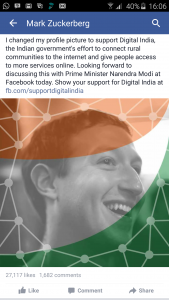 even the CEO of Facebook sporting a DP in support of Digital India. Google in the meantime announced that it will provide free Wi-Fi at 500 railway stations; Microsoft is planning to take broadband connectivity to 5 lakh villages. There is now so much excitement and so much euphoria around the idea, that one feels that there is nothing that can now come between us and our tryst with digitisation. No power on this planet can now stop us from being Digital India. Yeah! Yeah!
even the CEO of Facebook sporting a DP in support of Digital India. Google in the meantime announced that it will provide free Wi-Fi at 500 railway stations; Microsoft is planning to take broadband connectivity to 5 lakh villages. There is now so much excitement and so much euphoria around the idea, that one feels that there is nothing that can now come between us and our tryst with digitisation. No power on this planet can now stop us from being Digital India. Yeah! Yeah!